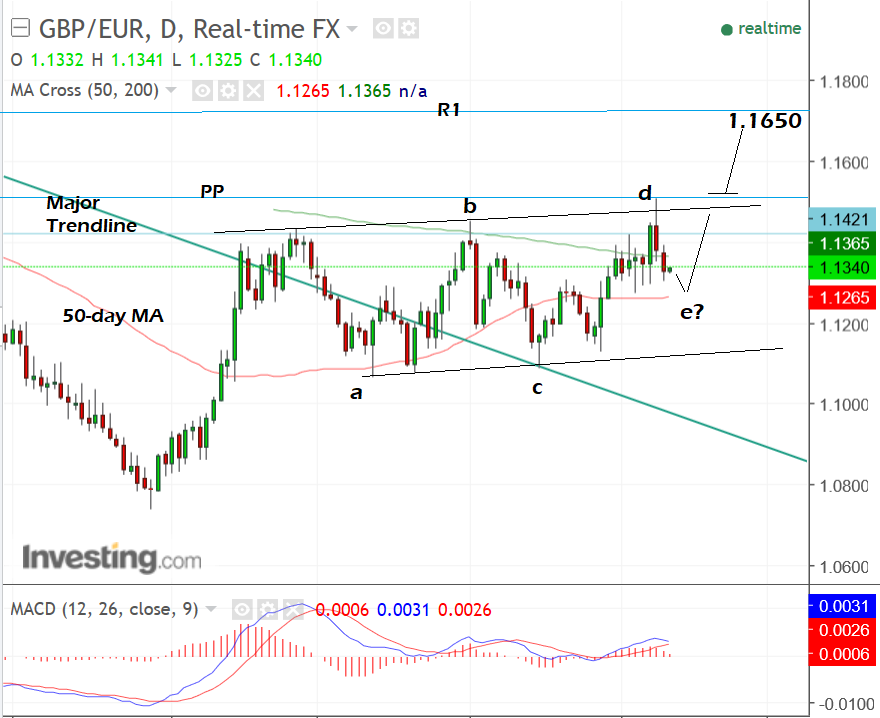Technical Analysis: Pound-to-Euro Rate Expected to Breakout Higher to 1.1650

Despite being trapped in a range between 1.1050 and 1.1510, the pair is forecast to eventually breakout higher as the uptrend resumes.
The Pound-to-Euro exchange rate is in an extended sideways move illustrated by the price action between the two black lines on the chart below.

Normally sideways moves contain a minimum of five component waves, often labelled 'a-e', and the one on GBP/EUR looks like it is forming wave 'e' right now, so it is close to finishing.
In the immediate future, the pair could go a bit lower to complete wave 'e', possibly down to the 50-day moving average (the red line) at 1.1265 - or even lower to the bottom of the range.
After 'e' has finished the sideways move will probably end in a breakout. We think it is more likely to breakout higher rather than lower, based on the look-and-feel of the chart.
According to technical theory, there is a higher chance of a breakout in the direction prices were trending in prior to the formation of the sideways range, which in this case was up.
If the exchange rate goes above the previous highs, and trades above 1.1515, it would in our view provide confirmation of an extension higher, probably to a target at 1.1650. This is just below the R1 monthly pivot at 1.1665.
R1 is likely to prove a formidable ceiling above which it could be difficult for the exchange rate to break. Technical traders often expect a pull-back at pivot levels, so much so that many trade pivot points as very short-term bets.
This tends to increase a currency's supply at the pivot, leading to lower prices, essentially making the pull-back something of a 'self-fulfilling prophecy'.
Other Views
More bearish than Pound Sterling Live is Robin Wilkin, a strategist at Lloyds Banking Group, who says the December 8 breakout higher is a "false breakout" and the pair now likely to fall to the range lows around 1.1100.
More in line with our bullish outlook is Karen Jones, a technical analyst at Commerzbank, who sees the current move back down within the range (which we have labelled wave 'e') as merely a temporary pull-back after the pair encountered an obstacle in the form of the 55-day moving average.

Get up to 5% more foreign exchange by using a specialist provider by getting closer to the real market rate and avoid the gaping spreads charged by your bank for international payments. Learn more here.




